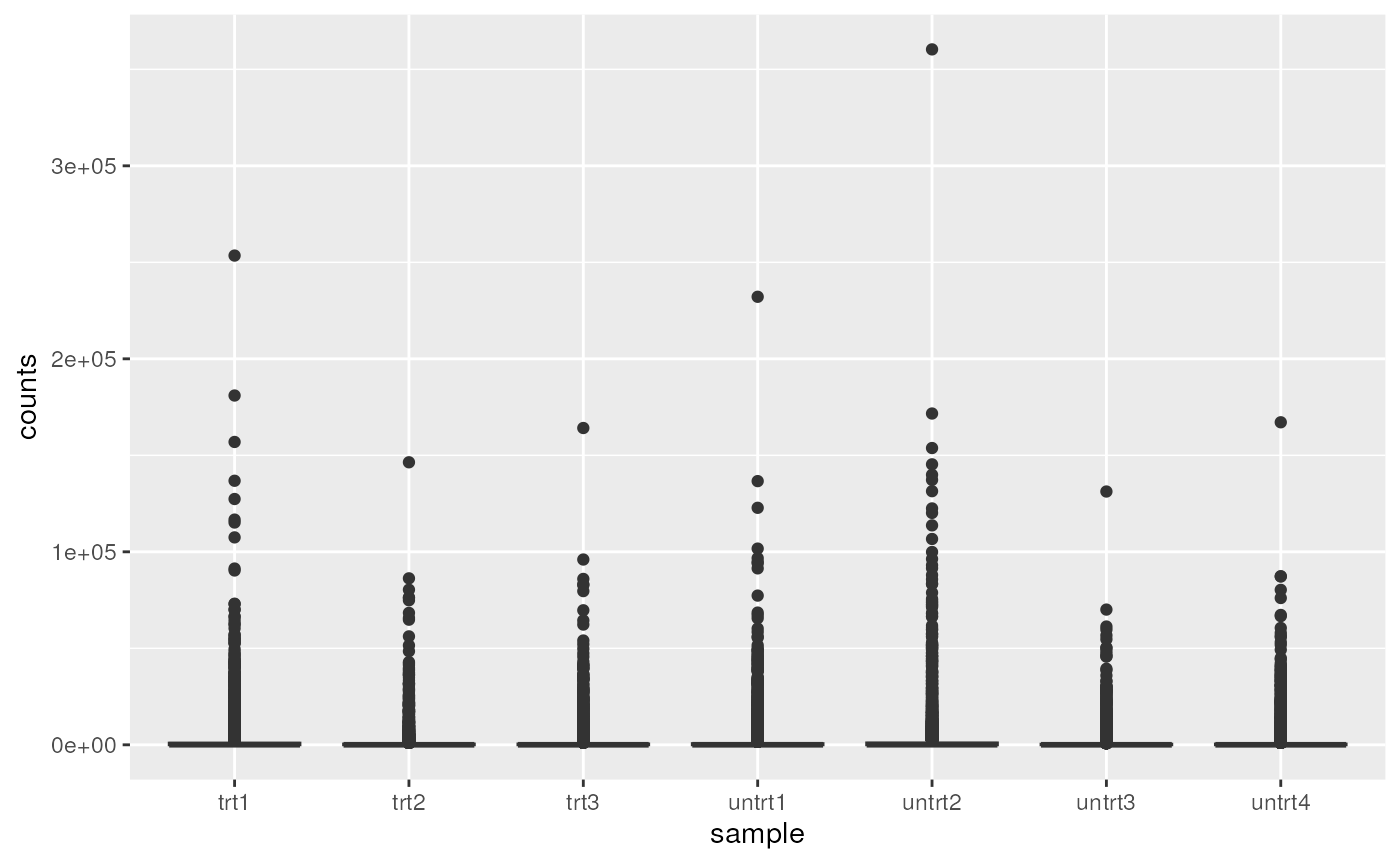Create a new ggplot from a tidySummarizedExperiment object
Source:R/ggplot2_methods.R
ggplot2-methods.Rdggplot() initializes a ggplot object. It can be used to
declare the input data frame for a graphic and to specify the
set of plot aesthetics intended to be common throughout all
subsequent layers unless specifically overridden.
Arguments
- .data
Default dataset to use for plot. If not already a data.frame, will be converted to one by
fortify(). If not specified, must be supplied in each layer added to the plot.- mapping
Default list of aesthetic mappings to use for plot. If not specified, must be supplied in each layer added to the plot.
- ...
Other arguments passed on to methods. Not currently used.
- environment
DEPRECATED. Used prior to tidy evaluation.
Value
A ggplot
Details
ggplot() is used to construct the initial plot object,
and is almost always followed by + to add component to the
plot. There are three common ways to invoke ggplot():
The first method is recommended if all layers use the same
data and the same set of aesthetics, although this method
can also be used to add a layer using data from another
data frame. See the first example below. The second
method specifies the default data frame to use for the plot,
but no aesthetics are defined up front. This is useful when
one data frame is used predominantly as layers are added,
but the aesthetics may vary from one layer to another. The
third method initializes a skeleton ggplot object which
is fleshed out as layers are added. This method is useful when
multiple data frames are used to produce different layers, as
is often the case in complex graphics.
Examples
library(ggplot2)
tidySummarizedExperiment::pasilla %>%
tidySummarizedExperiment::ggplot(aes(sample, counts)) +
geom_boxplot()
#> Warning: tidySummarizedExperiment says: from version 1.3.1, the special columns including sample/feature id (colnames(se), rownames(se)) has changed to ".sample" and ".feature". This dataset is returned with the old-style vocabulary (feature and sample), however we suggest to update your workflow to reflect the new vocabulary (.feature, .sample)
